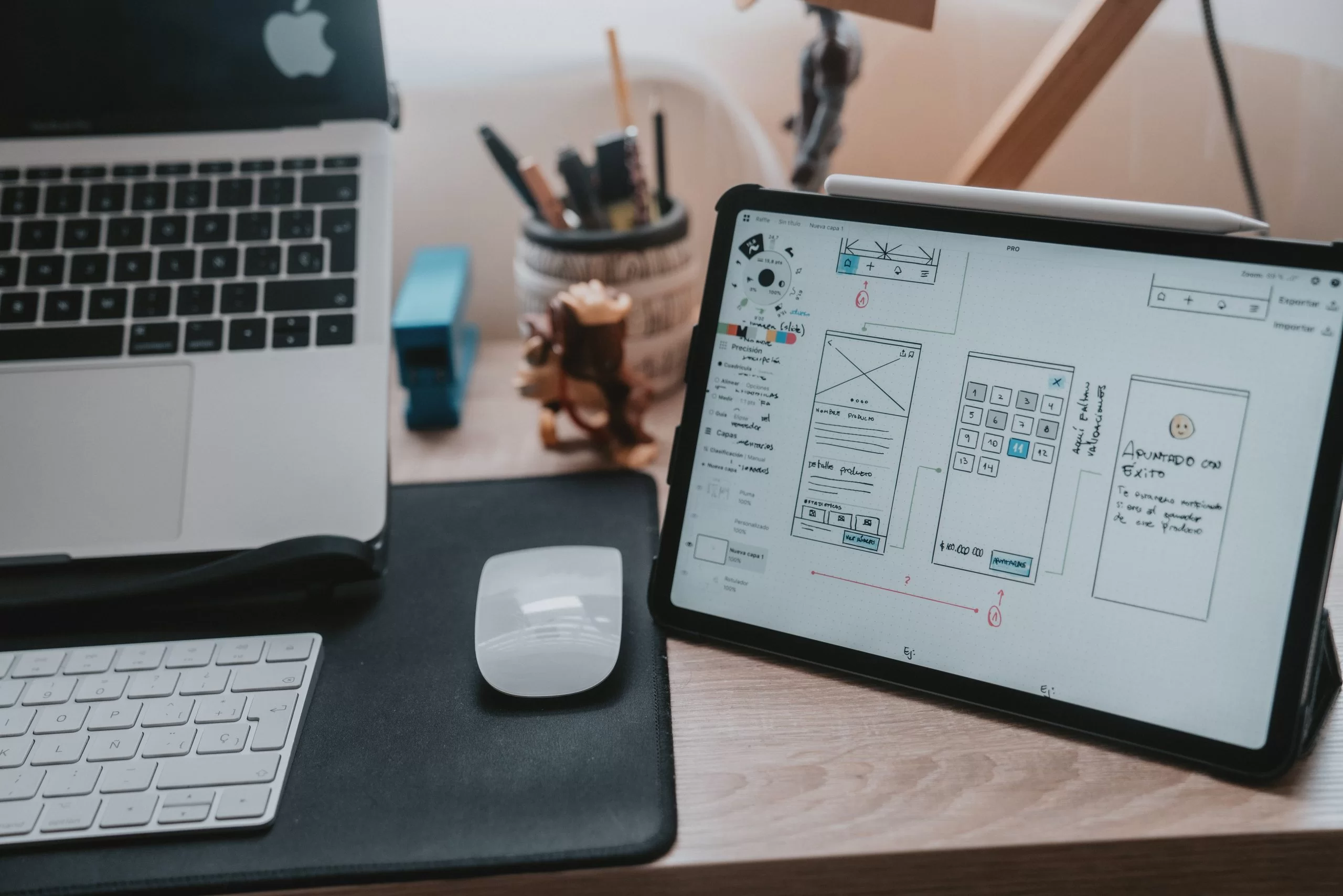Consistency is one of the most crucial yet often overlooked principles in user interface (UI) and user experience (UX) design. When UI elements behave reliably across platforms and screens, it builds user trust and instinctively guides interactions. However, a lack of consistency creates confusion, hinders usability, and damages your brand image over time.
In this comprehensive guide, we will explore proven strategies that UX designers and product development teams can implement to bring greater consistency to your app or website’s interfaces. By maintaining visual, functional, and behavioral consistency, you allow users to focus on your content rather than struggle with contradictory design.
Keep reading to learn useful tips for creating the easy-to-use, coherent, and good UI experiences that drive growth and increase conversion rate.
What exactly is design consistency?
Consistency in UI/UX design refers to maintaining uniformity across all visual and interactive elements of a digital product. When colors, fonts, layouts, icons, terminology, and more are cohesive from screen to screen, it creates familiarity and strengthens usability. Users can apply what they learn by interacting with one interface component to others intuitively.
Design consistency stems from adhering to style guides, pattern libraries, and best practices governing all aspects of the UI and UX. This includes consistency in:
- Visual Design: Be visually consistent. Using the same design language and visual style gives a consistent look and feel. Elements like colors, fonts, icons, illustrations, and animations should align with the overall aesthetic.
- Functional Design: Maintaining reliable interactions, placements, and behaviors for buttons, menus, inputs, and other UI components prevents confusion.
- Content: Tone, messaging, and terminology should align across platforms. Furthermore, label meanings and language usage should also be standardized.
By bringing consistency in UI/UX design, you allow users to focus on your content and core product value rather than struggling with discordant interfaces. Consistent positioning and styling of navigation, for example, enables instinctive usage over time, and consistent iconography instantly conveys meaning. Overall, design consistency improves usability through familiarity, strengthening user trust in the process.
10 UI/UX best practices for consistent design
In the digital age, User Experience (UX) and User Interface (UI) design play a pivotal role in the success of any product or application. Consistency in UI/UX design is a cornerstone of creating a positive and engaging user experience. It ensures that users can easily navigate through your product, find what they need, and enjoy a cohesive and visually appealing design.
A bad UI can ruin the whole experience of a user. That is why, ensure to be consistent in the user interface. Therefore, it is crucial to follow some guidelines and best practices to make an awesome design of either a website or an app.
Now, let’s delve into ten best practices to bring consistency and standards to your UI/UX design and enhance your design game.
1) Establish a design system:
A design system is the foundation of consistency in web and mobile UI/UX design. It serves as a comprehensive set of guidelines, patterns, and components that define the visual and interactive elements of your product. By having a design system in place, you can ensure that your design maintains uniformity throughout different screens and interactions, enhancing the overall user experience.
2) Prioritize user-centered design:
To achieve consistency, it’s essential to focus on user-centered design. Understanding your users’ needs, preferences, and pain points is crucial. Conduct user research to create personas and user journeys that guide your design decisions, ensuring that your product effectively caters to your target audience.
3) Cohesive color palette:
Select a cohesive color palette that resonates with your brand and aligns with your users’ expectations. Consistency in color not only enhances visual appeal but also conveys meaning. Therefore, you should use colors to signify interactivity, convey emotions, and establish a clear visual hierarchy within your design.
4) Grid system for layout:
Implementing a grid system for your layout is a critical component of consistency. Grids help align elements, create a visual hierarchy, and ensure a balanced and harmonious design. Furthermore, they also facilitate the placement of elements, making your design more organized and predictable.
5) Typography standards:
It’s pertinent to note that typography is a powerful element of design. Consistency in fonts, font sizes, and styles enhances readability and gives your design a professional and polished look. Choose typefaces that align with your brand’s personality and maintain uniformity throughout your product.
6) Standardized Iconography:
Icons are invaluable for conveying information quickly and concisely. You should ensure to maintain a library of standardized icons with clear and consistent meanings. This practice ensures that users can easily understand and interact with your product, enhancing their overall experience.
7) Consistent UI elements:
Elements like buttons, forms, navigation menus, and other interactive components must maintain consistency in appearance and behavior. Users should not encounter a learning curve as they move from one section of your product to another. Predictability in UI elements is key to an excellent user experience.
8) Responsive design:
In an era of various devices and screen sizes, responsive design is non-negotiable. Your design should adapt to different screens while maintaining core elements and functionality. This way, users enjoy a consistent experience across mobile, desktop, tablet or any other device.
9) Usability testing:
Usability testing is crucial for validating that your design is not only consistent but also user-friendly. Gathering feedback from real users helps you identify inconsistencies or issues that might have been overlooked in the design phase. Testing ensures that your design aligns with user expectations and preferences.
10) Continuous improvement:
Consistency in UI/UX design is an ongoing process. As design trends evolve and user preferences change, it’s vital to adapt and refine your design. Therefore as a UI/UX designer, you need to regularly update your design system, consider user feedback, and make necessary improvements to maintain a high level of consistency and user satisfaction.

Why is consistency in design important?
Consistency in design is a fundamental aspect of creating a positive user experience and is of paramount importance in the world of UI/UX. It not only defines the visual appeal of a product but also significantly impacts its functionality. Here’s why maintaining consistency in design is crucial:
1) User familiarity:
Consistency creates a sense of familiarity for users. When they encounter similar elements and patterns across a website or application, they feel more at ease navigating through it. Consequently, this familiarity reduces the learning curve and makes the user more comfortable.
2) Enhanced user experience:
A consistent design allows for a smoother and more efficient user experience. Users can predict the placement of navigation menus, buttons, or links, which makes their interactions more intuitive and enjoyable.
3) Branding and credibility:
Consistency is key to building a strong brand. A cohesive design reinforces your brand identity and builds trust with your audience. Users are more likely to trust and engage with a brand that appears reliable and professional.
4) Reduced cognitive load:
It’s pertinent to mention that inconsistent designs force users to think more about their actions. They need to relearn how to interact with your product, which increases cognitive load. This can be frustrating and lead to higher bounce rates. This reiterates the need for consistent UI/UX design.
5) Cross-platform adaptability:
With the vast array of devices and platforms available, maintaining consistency ensures that your design adapts seamlessly to different screen sizes and resolutions. This responsiveness is extremely critical in the mobile-first era.
6) Efficient development:
It is an undeniable fact that design consistency simplifies the development process. Design elements can be reused, and developers can create a consistent codebase, leading to faster development cycles and lower costs. Therefore, the product can be launched much shorter time period.
7) Scalability:
As your product or website grows, maintaining a consistent design becomes increasingly important. It ensures that new features or sections can be integrated without causing disruption to the existing design. On the other hand, an inconsistent design makes any form of scalability extremely difficult.
8) Accessibility:
Similarly, a consistent design can also improve accessibility. Users with disabilities often rely on consistent design patterns to navigate websites and applications effectively. A consistent design ensures users with any form of disability can navigate the web pages without any hassle.
9) Customer satisfaction:
Ultimately, a consistent design leads to higher customer satisfaction. Users appreciate when a product is easy to use and aesthetically pleasing. This satisfaction can translate into brand loyalty and positive word-of-mouth recommendations.
Conclusion
When we talk about optimized user experience for web or mobile app, Knowing the basics of design is important and staying consistent in it is even more important. Consistency in UI/UX design is something you cannot ignore and it’s easy for some parts to slip through the cracks.
The end goal is, of course, a perfectly consistent and in-sync interface, but that’s not always possible right out of the gate. This blog encompasses some useful tips to bring consistency to your UI/UX design.
At Ropstam Solutions, we have a dedicated team of UI/UX designers with years of industry experience. For more than a decade, we have delivered top-notch UI/UX projects to our satisfied clients. If you are interested in availing of our services for your web or mobile projects, contact us now via emailing us at info@ropstam.com or call us at +1 (866) 631-8767.













